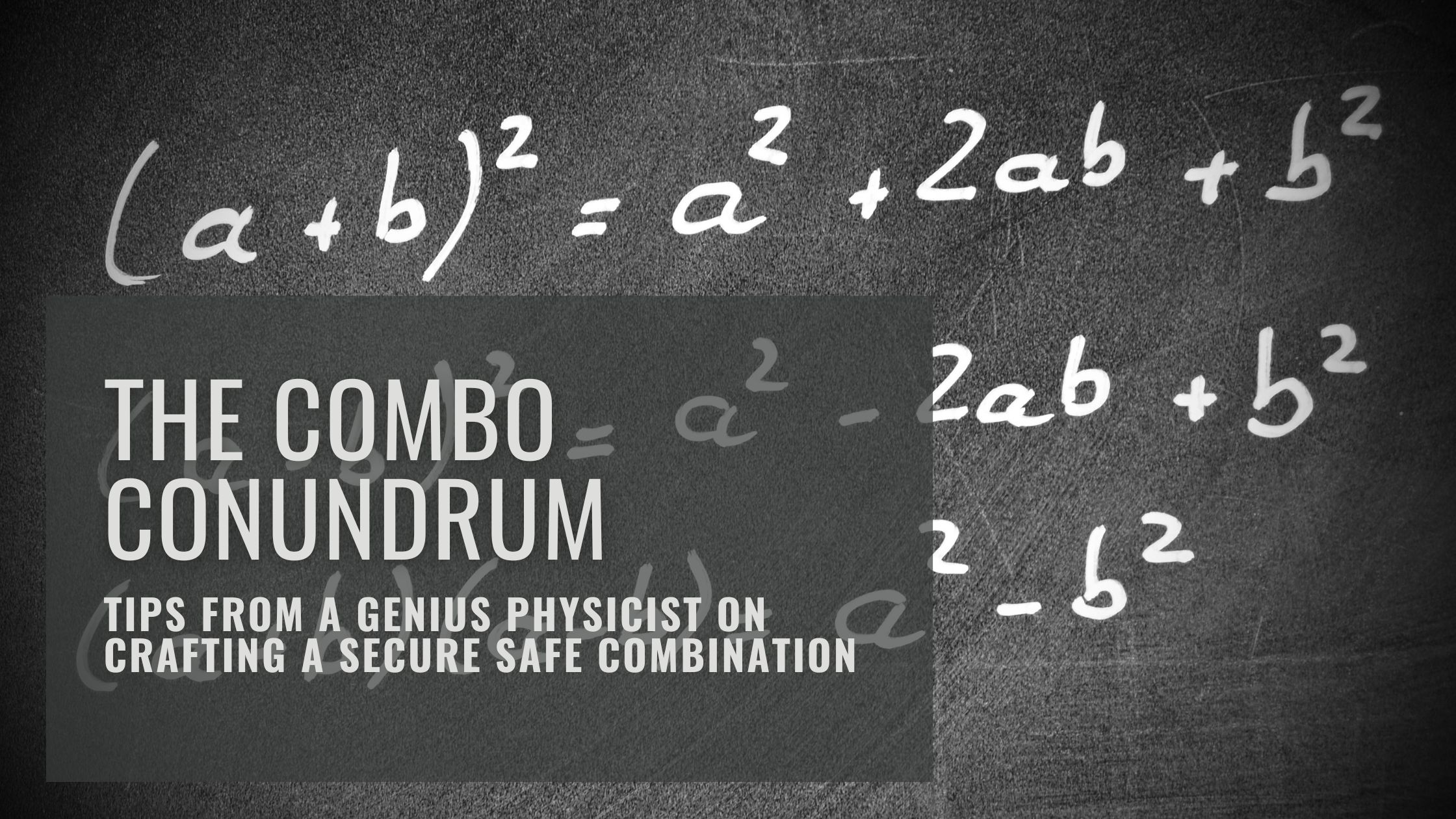You’ve just wrestled your new safe into place—back aching, friends dodging your calls for future moving “help”—and now it’s time to lock away your valuables. But before you dial in that combination and slam the door shut, pause. Take a breath. Setting a weak combo could turn your impenetrable fortress into an easy target. Drawing from expert guidelines and the clever insights of Nobel Prize-winning physicist Richard Feynman, here’s how to choose a combination that’s both secure and smart. And remember: Do not—I repeat, do not—set your combo, close the door, and lock it without testing it with the door open at least three times to ensure it works as expected.
Feynman, famous for his work on the atomic bomb at Los Alamos in the 1940s, wasn’t just a physics whiz; he was a master safecracker in his spare time. In James Gleick’s biography Genius: The Life and Science of Richard Feynman, we get a glimpse into his observations on human predictability in security. As Feynman delved into the art of cracking safes (without tools like drills or nitroglycerin), he realized the key weakness wasn’t the lock—it was us. “People are predictable,” he noted. They leave safes unlocked, stick to factory defaults like 25-0-25, scribble combos on desk drawers, or pick obvious numbers like birthdays.
This insight alone slashed the odds dramatically. Out of roughly 8,000 possible combinations on a standard lock, Feynman calculated that only about 162 could plausibly be dates. By accounting for the dial’s margin of error, he could test just three options for months (0, 5, 10), six for days (1-31), and nine for years (1900 onward)—a mere 3 x 6 x 9 = 162 tries, doable in minutes. A few “inexplicable” successes like this, and his reputation as a safecracker soared. The lesson? Don’t make it easy for someone like Feynman—or any opportunistic thief—to guess your code.
Building on this, let’s turn to practical tips from the Sargent & Greenleaf (S&G) Mechanical Lock Guide to optimize your lock’s design strengths and avoid common pitfalls. These rules ensure your combination is secure, unpredictable, and mechanically reliable.
1. Avoid Numbers Ending in 0 or 5
Steer clear of combos where all digits end in 0 or 5, as they’re too patterned and easy to guess or manipulate.
- Bad example: 50-15-30
- Good example: 52-15-37
2. Skip Ascending or Descending Sequences
Predictable patterns like rising or falling numbers are a cracker’s dream. Mix it up!
- Bad example: 22-41-68
- Good example: 22-68-41
3. Maintain a 10-Number Gap Between Adjacent Digits
Crowding numbers too close invites errors or easier guessing. Give them space.
- Bad example: 41-39-66
- Good example: 41-30-66
4. Steer Clear of the “Forbidden Zone” for the Last Number
Never use a third (or final) number between 95-99 or 0-20. This can cause mechanical issues, preventing the lock from engaging properly.
- Pro tip: This rule only applies to the last digit—keep the others free.
5. Ditch Easily Guessed Personal Numbers
Echoing Feynman’s wisdom, avoid birthdays, anniversaries, house numbers, or phone digits. They’re the first things a thief (or a curious physicist) will try.
By blending Feynman’s human-centered insights with these technical tips, you’re not just setting a combo—you’re outsmarting predictability. Your safe isn’t just a box; it’s a safeguard against both mechanical flaws and human folly. Test it thoroughly, store it wisely, and sleep easy knowing your valuables are truly secure.
For more on mechanical locks, check out the S&G Mechanical Lock Guide. Excerpts from Feynman’s story adapted from James Gleick’s Genius: The Life and Science of Richard Feynman. Additional insights via Mike Pope’s blog.

